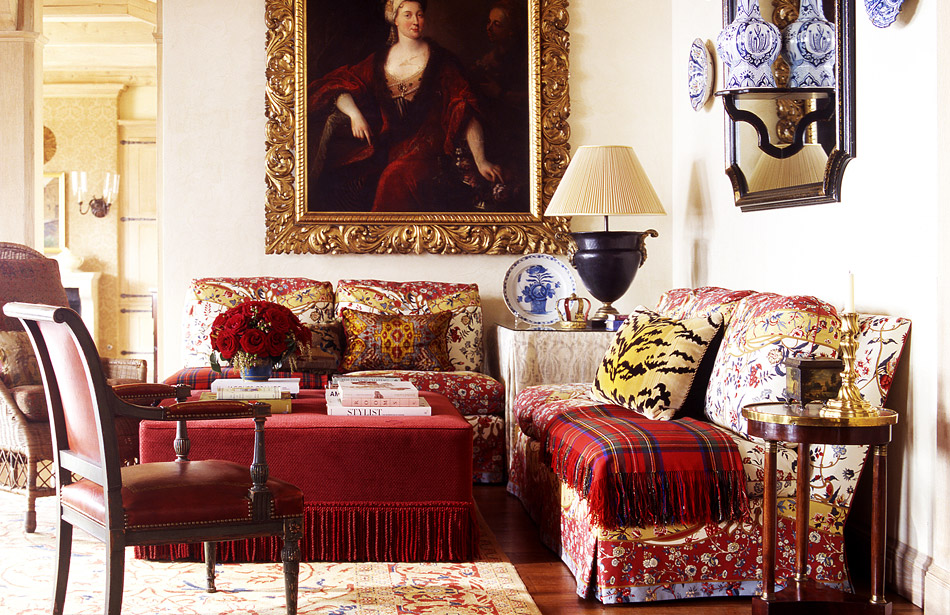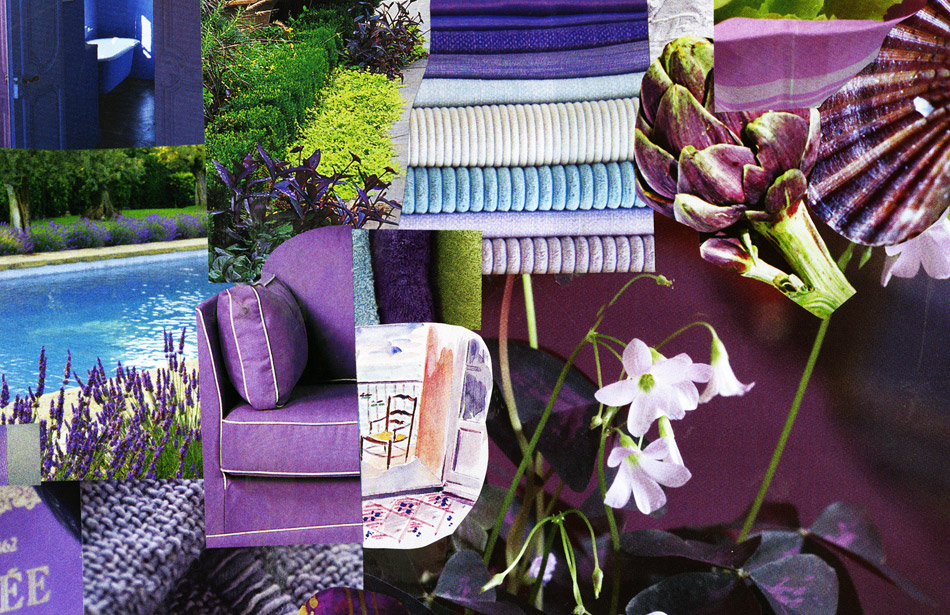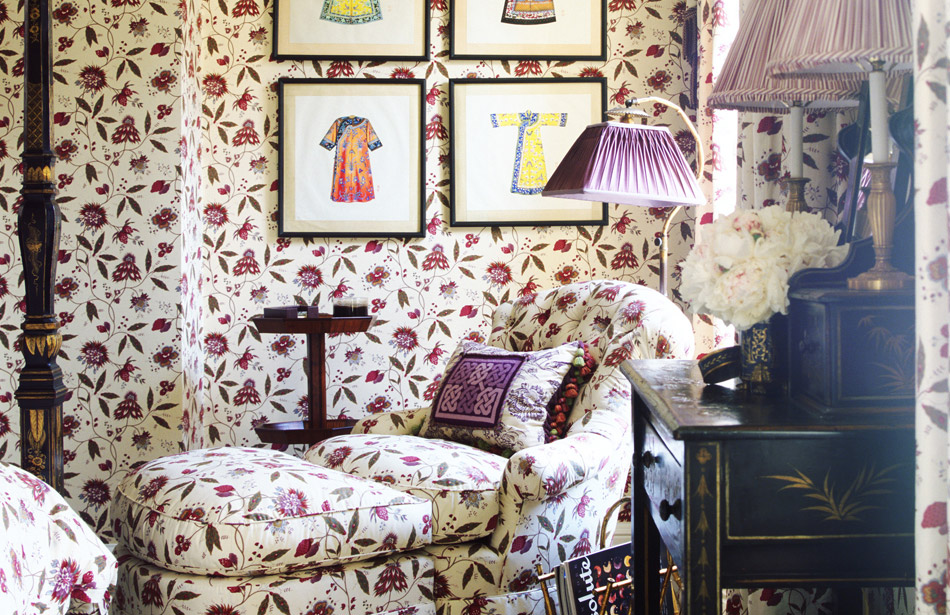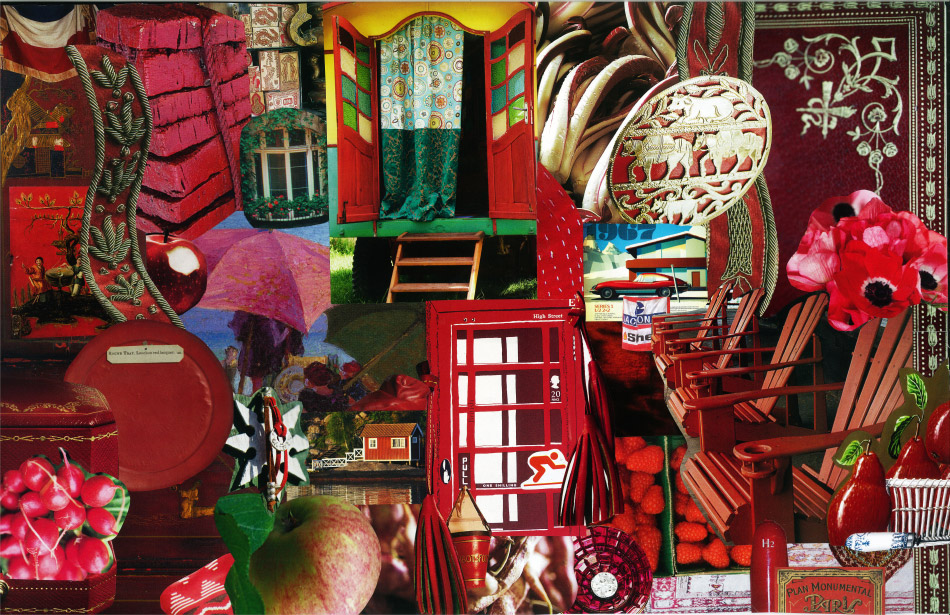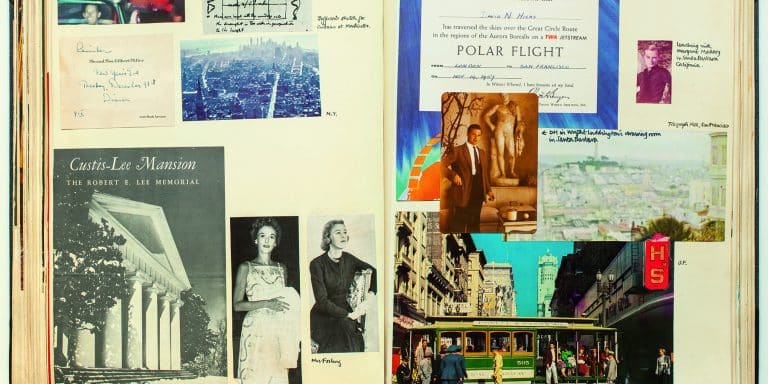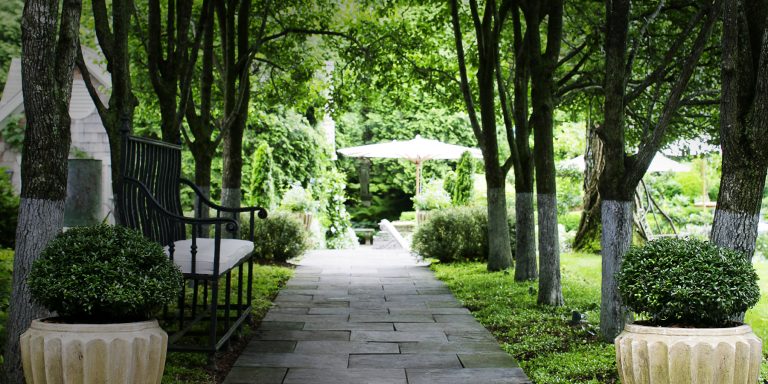
January 2013The New York decorator Charlotte Moss, here at her home in East Hampton, recently published her eighth book, A Visual Life, which combines excerpts from her own scrapbooks with those created by other notable women. Photo by Pieter Estersohn, all images courtesy of Rizzoli
In her eighth book, A Visual Life, Charlotte Moss, the prolific New York decorator, style-setter and, as it turns out, scrapbooker, confesses: “I’m a die-hard glue-stick-and-scissors person.” Using the simplest of tools, she creates stunning, multidimensional collages in order to preserve and savor all that is meaningful and inspirational in her life. Despite having surrounded herself with luxury and beauty, Moss is, we learn, at the end of the day still a roll-up-your-sleeves-and-let’s-get-it-done kind of a gal.
Forty completed — what she refers to as “cooked” — scrapbooks prove that. (Lining the shelves of the library of her Upper East Side townhouse, they’re deliciously immortalized in four-ring caramel leather volumes bound by East Hampton’s Vogel Bindery.) So, too, do the dozens of interiors she’s crafted over a 20-year career, plus the fabrics, wallpapers, rugs, china and fragrances she’s created, retail stores she’s opened, lectures she’s delivered, books she’s written and numerous philanthropic causes with which she’s actively involved. Not surprisingly, Moss isn’t just committed to the end-product of the hobby she’s pursued since childhood — it’s the very task that fuels her. “The joy is in the doing,” she writes.
Interestingly, A Visual Life (Rizzoli) contains excerpts not just from Moss’s own scrapbooks (with their layered photos and cutouts of beloved places, people, flowers, menus and thank-you notes) but also from other scrapbooks she owns that belonged to women she admires, from Gloria Vanderbilt and Evangeline Bruce to Jacqueline Kennedy Onassis. Thus, along with Moss’s snapshots of Paris, we see Jackie’s handwritten recipe for poulet de Bresse and her menu from a 1962 White House dinner for the Shah of Iran — personal ephemera never before seen by the public.

Along with gardening and home decor, fashion is another subject that surfaces in A Visual Life.
1. The art of scrapbooking has deep and far-reaching roots, from Thomas Jefferson to Cecil Beaton. What do you think explains its broad and enduring appeal?
First, anyone can do it, as it takes no special skills, no special school, just the desire. And the process is open-minded. At the most basic level, scrapbooks are pictorial repositories of things we like that we do not want to lose — even more important today when an image or a letter can be lost by tapping a button. Scrapbooks are not only recording the “now,” they also can be about the future. A collage in my book includes elements that I would like in a house should I decide to build one in the future. Dreaming is essential in creativity and in life.
2. Gloria Vanderbilt was your scrapbook muse. How did she inspire you to begin scrapbooking, and how did it come full circle, with your hosting a book party in her honor — which you’ve featured in your book?
I started doing collages as a child. Fast-forward to the 1970s, when Gloria wrote Collage, a book that encouraged and validated my interest in creating them. When Wendy Goodman — whom I adore — wrote her book on Gloria two years ago, I offered to have a dinner party at home. It was a way to thank Gloria for inspiring me and to congratulate Wendy on such a beautiful book.
I had fun with every detail: from removing the portière at the entry vestibule and hanging quilts that I bought online to collaging the invitations to having a stunning cake made by Sylvia Weinstock that resembled gingham, a Gloria signature fabric, and was topped with her logo, a swan. Gloria has lived a visual life, and she keeps creating, which I admire. There is nothing sentimental in her work; it is pure emotion. Doesn’t all design start that way, with an emotion?

In 2006 Moss hosted a dinner party at her Manhattan home for the Metropolitan Museum’s Costume Institute, creating the fête “in the style of Pauline de Rothschild.” Photographs by Hannah Thomson
3. The book doesn’t just show excepts from your scrapbooks, but also from scrapbooks you’ve collected of notable women you admire.
Yes, and they are all very different. For example, Elsie de Wolfe’s is her own personal photo album, with the title Me simply scrawled in her own hand on the cover. Evangeline Bruce made two decorating scrapbooks of magazine clippings and black-and-white photos she took of her own houses or while visiting friends. Pauline Trigere’s is an entertaining journal, complete with what she wore to each dinner and a comment on how the evening went, and Jacqueline Onassis’s is a collection of notes and specific instructions to her housekeeper on legal paper. I admire all of these women for their discipline, attention to detail, humor and style. Lessons from their lives make you want to reach higher, to stretch yourself. These rich lives inform our own, and I hope by revealing some part of this material that they will inspire others.
4. You are, as you write in the book, “possessed by paper,” so the literal cutting and pasting of images into your gorgeous books is the ideal medium for you. But what about those of us who are less deft? Are virtual mediums like Pinterest acceptable substitutes?
Photographing, cutting and then pasting just happens to be my method as I am inclined toward the tactile part of the process; it’s like gardening for me. Pinterest and Polyvore are not substitutes for this; they are new methods we have available to express ourselves and that allow us to communicate with others, more like augmenters to the cut-and-paste method. Personally, I want the tangible results that I can wander through and edit.

“These collages, put into books, have become my treasured visual memoirs, personal storyboards, my inspiration, and my creative outlet for years,” writes Moss.
5. What ultimately compels you to keep scrapbooking so diligently despite your incredibly hectic life? Is it because, as Candy Pratts Price writes of her own scrapbooking obsession in an essay within your book, “it allows you to save the days of your life”?
I would rather describe it as a full life, not a hectic one, although at times it is nothing but. I totally agree with Candy: scrapbooking is preserving time, through the recording of it, which in turn, allows revisiting. I love process. I love understanding how other people work, be they craftsmen, artists, writers or designers. For example, I have never read a Stephen King novel, but I am now listening to the audio version of his book On Writing and learning and laughing hysterically at the same time. I always remember what Russell Page said about process: that the pleasure is in the doing, not the end result.
Purchase This Book
Or Support Your Local Bookstore

